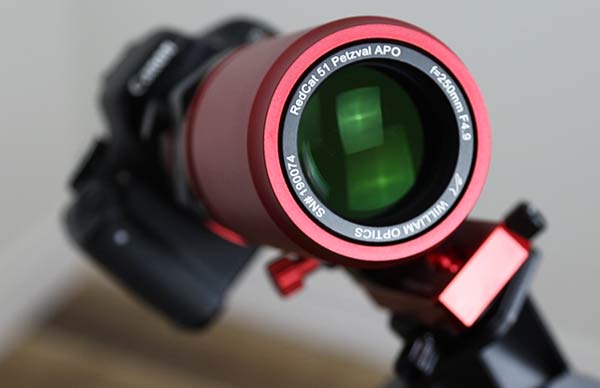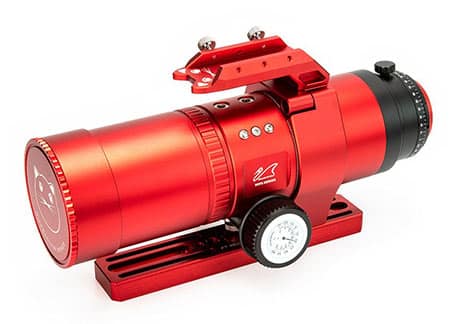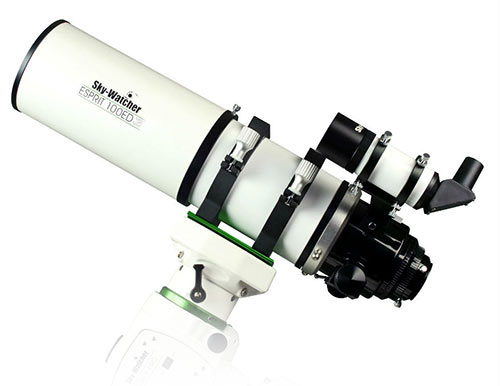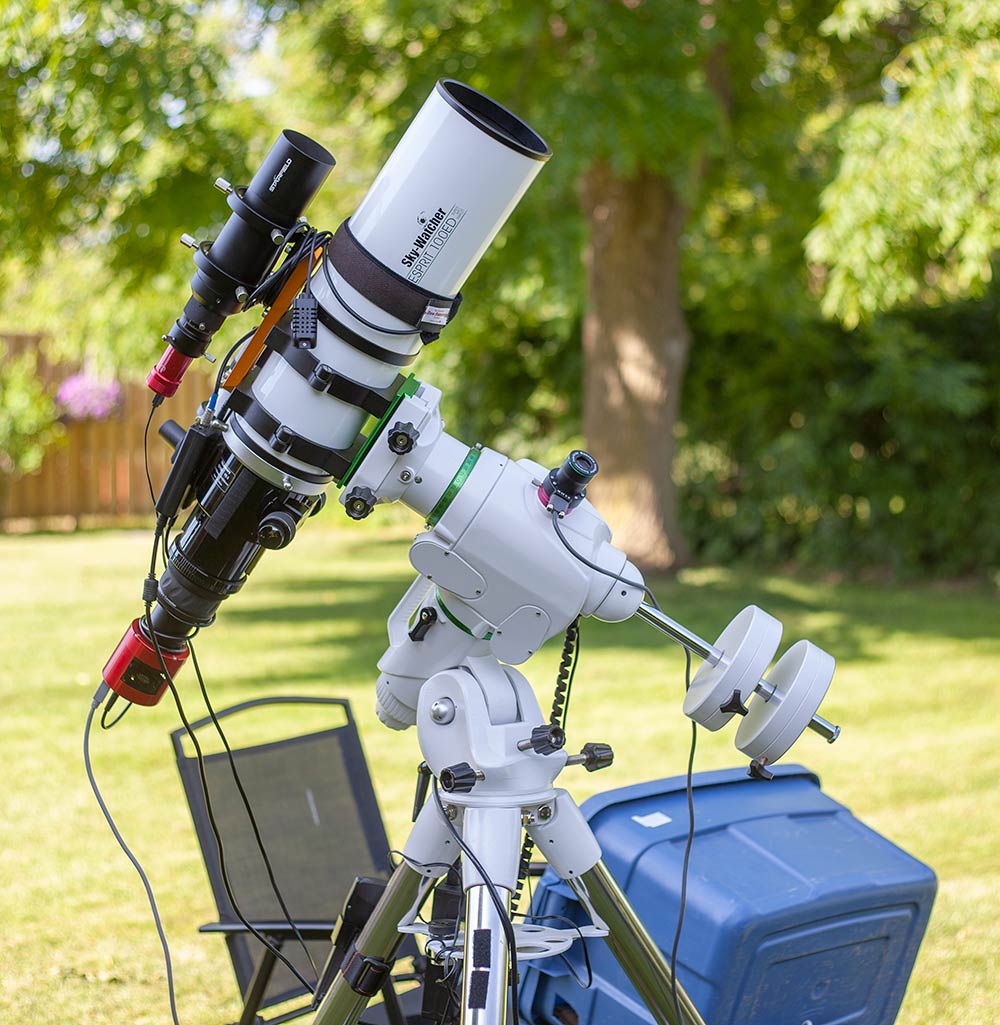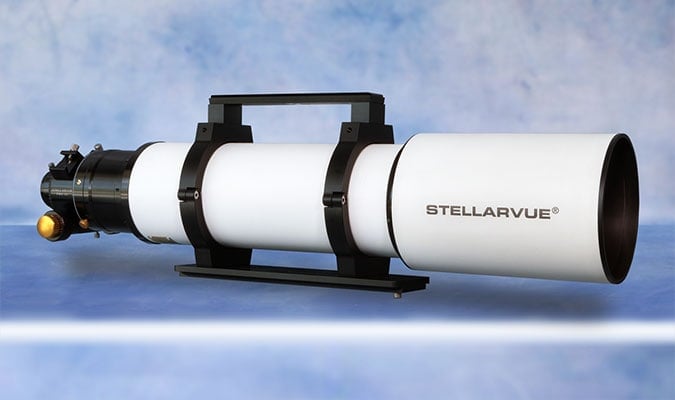The Apochromatic Refractor Telescope
Apochromatic refractor telescopes (often referred to as ‘APOs’) represent a significant advancement over the more commonly used achromatic telescopes in the visual astronomy community. While an achromat is acceptable for visual use, an ‘APO’ is recommended for deep-sky astrophotography.
By incorporating multiple lenses, these telescopes effectively eliminate the issue of chromatic aberration—where different wavelengths of light come to different focal points. A refractor that is truly color-free is called an apochromat.
The images shown above were all taken using my apochromatic refractor telescope (RedCat 51).
Main Benefits of an ‘APO’
- Exceptional Color Correction: Apochromatic refractors use advanced glass and optical designs to virtually eliminate chromatic aberration, delivering true-to-color, sharp, and high-contrast views and images.
- Pinpoint Star Images: These telescopes produce sharp and well-defined stars, making them ideal for astrophotography and detailed visual observation.
- Low Maintenance: With a sealed optical tube and no need for collimation, apochromatic refractors are reliable and easy to maintain compared to other telescope designs like reflectors.
- Versatility: They excel in both wide-field and high-magnification observations, making them suitable for viewing deep-sky objects, planets, and the Moon, as well as astrophotography.
- Premium Build Quality: Apochromatic refractors are typically crafted with high-quality materials and precise engineering, ensuring durability and long-lasting performance.
Using an Apochromatic Refractor Telescope for Astrophotography.
This seemingly small enhancement makes a tremendous difference when photographing the night sky. It provides sharper and more accurate images, which is crucial for serious amateur astrophotographers.
Bright objects (such as stars or the moon) are a tough optical challenge for lenses and/or telescopes with inferior optics. As you can see in the example below, the color fringing created using an achromat is severe.
The difference between an achromatic refractor (left) and an apochromatic refractor (right). Insvla Astra
While a refractor is the most expensive telescope type in terms of dollars per inch of aperture, an apochromatic telescope offers superior image clarity compared to other telescope types (such as a Newtonian Reflector).
A compact apochromatic refractor telescope is lightweight and portable, making it an excellent choice for those familiar with camera lenses. The focal lengths, aperture, and lens diameter are often similar to those of a telephoto camera lens.
The William Optics RedCat 51 is a compact apochromatic refractor that feels like a camera lens.
Top Choices for Astrophotography
Here are some beginner-friendly apochromatic refractors for deep-sky astrophotography. These options would make an excellent choice for your first deep-sky imaging setup with a DSLR or dedicated astronomy camera.
Sky-Watcher Esprit 100 Super APO
When selecting your telescope, remember to consider the overall weight of your imaging equipment (including the camera, guide scope, and any other accessories). Your equatorial telescope mounts’ maximum payload capacity will determine the size and overall weight of the telescope you can use in your setup.
For example, a William Optics RedCat 51 (weighing just over 3 pounds) can be used on a portable star tracker mount. A heavier apochromatic refractor like the Fluorostar 132 needs a robust equatorial mount for successful imaging.
How They Work
Their ability to correct color aberration is particularly valuable in astrophotography, especially when capturing intricate details of large galaxies or nebulae. Unlike reflector telescopes that rely on mirrors, apochromatic refractors use lenses to deliver sharp, focused images directly through the eyepiece.
If you have attached a camera to your telescope, you will appreciate crisp images with excellent ‘color correction.’ This means that bright stars in the field will not display ‘color fringing,’ which can be a problem with the achromatic lens design.
The Apochromatic lens usually comprises three elements that bring light of three distinct colors to a common focus.
When connected to a camera, these telescopes produce color-accurate images with impressive contrast, making them ideal for capturing the night sky’s true colors.
Apochromatic refractors are also a fantastic option for beginners owing to their low-maintenance nature. Unlike other telescope types, they don’t require frequent lens realignment, known as collimation, as the lenses are securely sealed within a tube.
A typical deep-sky astrophotography setup with an apochromatic refractor on an equatorial mount.
This design protects the lenses from dust and moisture and ensures consistent optical performance. Additionally, these telescopes tend to have better heat dispersion than Newtonians, resulting in shorter cooldown times and quicker setup.
Another feature is their inclusion of full-frame sensors that deliver round star images even at the corners, a rare quality in smaller telescopes. They excel at observing and photographing bright celestial objects, like the full moon, offering crisp and clear views.
Glass Types
Telescope manufacturers use extra-low dispersion (ED) glass to reduce or eliminate chromatic aberration in an apochromatic refractor. This low-dispersion glass is paired with either two or more glass elements (carefully spaced) for an optical design free of false color.
Japanese companies HOYA and OHARA make the most popular types of ED glass used in an apochromatic refractor telescope. The glass materials found in modern APOs include FPL-53, FPL-55, and FCD 100.
The following graphic shared by Stellarvue (who make some of the finest telescopes on the market), presents a fantastic overview of the optical glass types used in today’s refractor telescopes.
Optical Glass Types and Dispersion (Stellarvue.com)
Air-Spaced Optics
When looking into apochromatic refractor telescopes, you may hear the term ‘air-spaced optics’ come up. This refers to a design where individual lens elements are separated by a thin layer of air rather than being bonded together with adhesive.
This approach allows for better correction of chromatic aberration, as each lens element can be made from different types of glass and spaced optimally to enhance color accuracy and image sharpness. It is a common feature in high-performance refractors, particularly triplet apo’s, where precise control over light paths is crucial for producing clear, vibrant views and images.
The air-spaced design also results in improved thermal stability. Air-spaced optics are less affected by temperature changes since there is no adhesive layer that could expand or degrade. This design also provides greater flexibility for lens manufacturers to adjust spacing and curvature, enabling more effective correction of optical aberrations like spherical aberration and coma.
The Stellarvue SVX130T Triplet APO Refractor.
One of the best air-spaced triplet apochromatic refractors on the market is the Stellarvue SVX130T. This 130mm f/7 apochromatic triplet is highly regarded for its premium optics, which are hand-figured and tested in Stellarvue’s California facility to ensure exceptional performance.
Limitations
However, it’s important to note some of the limitations associated with apochromatic refractors. Due to the complexities of manufacturing larger lenses, these telescopes typically come in smaller sizes.
This size limitation means that the cost of larger apochromatic refractors can rise steeply. Furthermore, the smaller aperture restricts the level of magnification, which might affect the viewing experience of more detailed planetary surfaces or deep-sky objects.
They do not excel at solar system photography, as capturing planets requires a large aperture and long focal length for the best results. For this type of astrophotography, a Schmidt-Cassegrain telescope design is a practical choice.
Related Post: Best Astrophotography Telescopes Available in 2025.
Despite these drawbacks, apochromatic telescopes are versatile and user-friendly, appealing to both seasoned astrophotographers and newcomers to the hobby.
Their robust construction, compatibility with various accessories, and potential for future upgrades, like autoguiding systems, ensure that these telescopes can deliver professional-grade results, elevating your stargazing and astrophotography endeavors.
Related Content
- Introduction to Deep-Sky Astrophotography: A Complete Guide
- How to Choose a Camera for Astrophotography (My Advice)
- The Best Astrophotography Mounts Available in 2025



